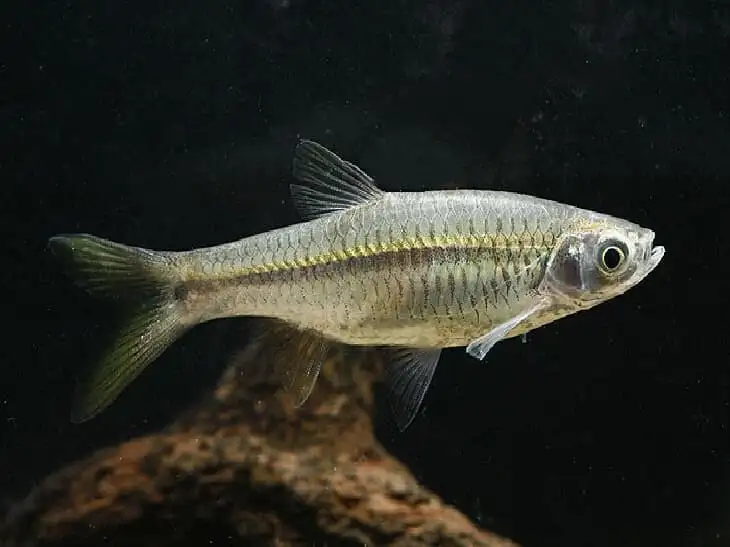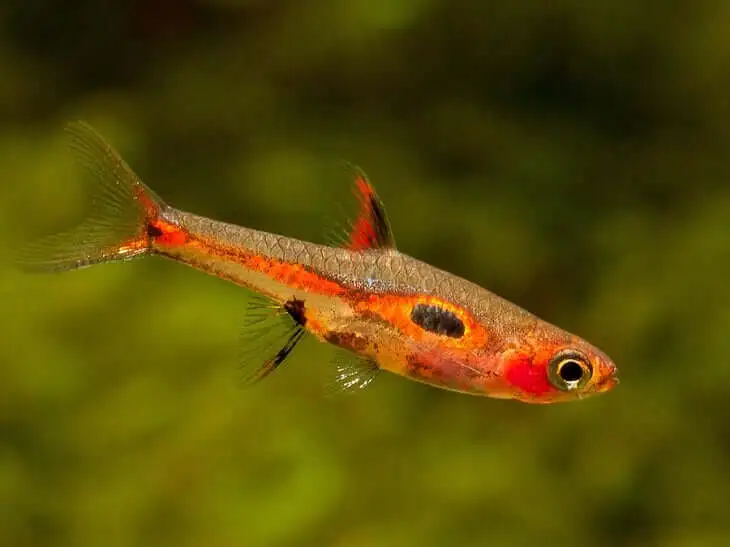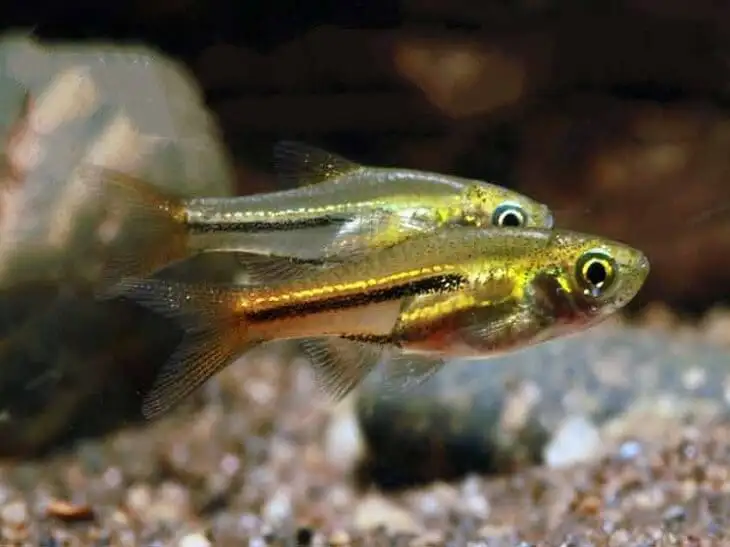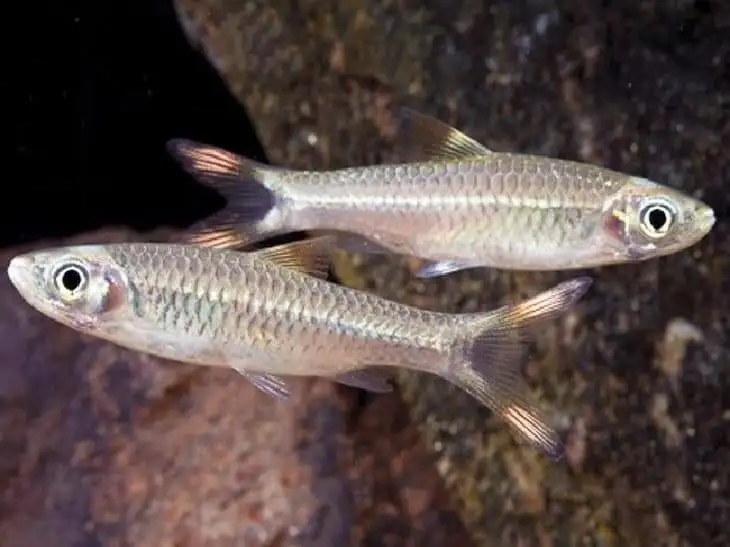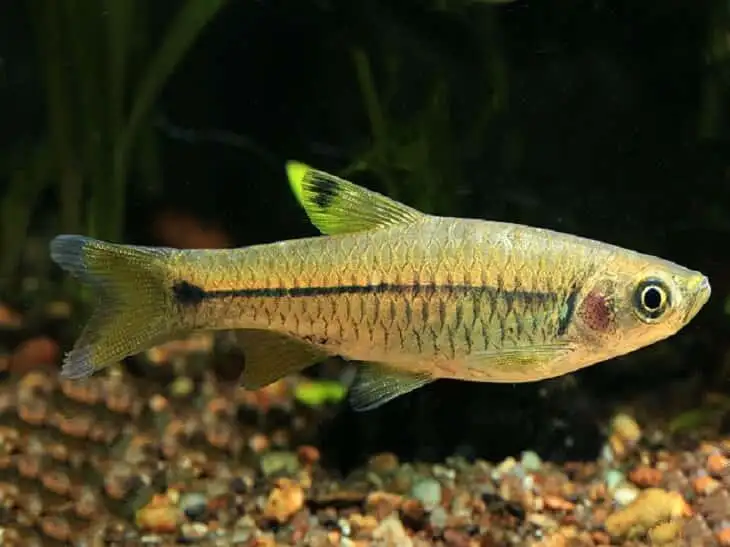Trigonopoma gracile
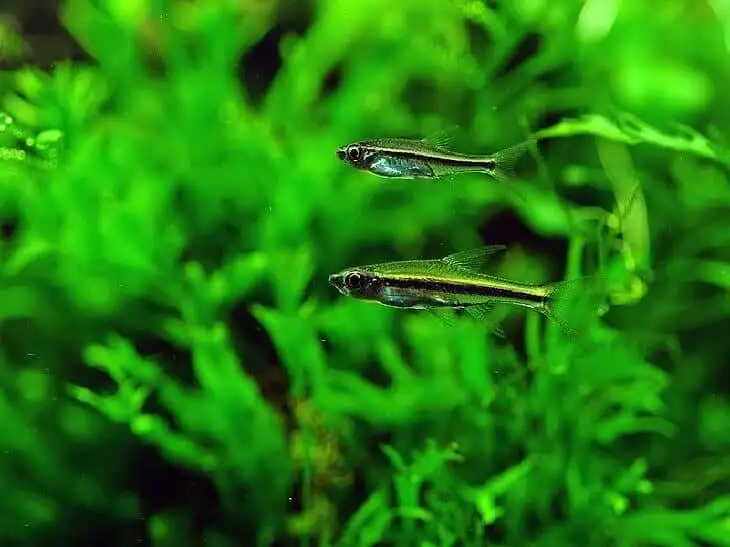
The Trigonopoma gracile naturally inhabits water bodies in Southeast Asia, in peninsular Malaysia, Singapore, the Greater Sunda Islands (Sumatra and Borneo). The fish can be found in swamps and forest channels. The water in these places has a brownish colouring due to humic acids and other chemicals released in the process of decomposing organics at the bottom. The fish are small and mobile, and their presence is a decoration for any aquarium. They are undemanding and easy to keep, even for beginners.
Trigonopoma gracile has a slender body. The fins are pointed and rather large. Also stand out the eyes of the fish, which seem disproportionately large compared to the body. This has an explanation, since the fish live in semi-darkness. A broad black stripe runs along the entire body, separating the fish's grey-coloured back and silver-coloured abdomen. Females have a rounded abdomen and are often slightly larger than males. The coloration of the males is more striking. The maximum size of 4.5-5.5 cm.
Trigonopoma gracile peaceful gregarious fish, which can easily be kept in a common aquarium with other peaceful, commensurate in size, fish. Keep the fish preferably in a group of at least 8-10. Keeping the fish in a group makes them less fearful and their behaviour more natural. In addition, the males will exhibit bright colours while courting the females. The fish can be kept in an aquarium of 80 liters and larger.
The fish display the most attractive colouration in a heavily planted aquarium with dark substrate. Coarse-grained river sand or a mixture of sand and gravel can be used as substrate. Snags and large stones can be placed at the bottom to create large shadow areas for the fish to hide in.
Adding pre-dried beech or oak leaf litter to the bottom will simulate the natural environment even more and it will, in addition, produce colonies of beneficial bacteria in the decomposition process, which provide good supplementary food for the fish. The leaf litter should be replaced with new litter every 3-4 weeks.
Water parameters: temperature 21-26° C, hardness dH 1-9°, pH 4,0-7,0. Requires filtration, aeration and weekly change of ¼ of the aquarium water with fresh.
The lighting should be low. To further reduce the light intensity, floating bushes can be placed on the surface of the water, which will be excellent natural light filters. The daylight hours are about 10 hours per day.
The Trigonopoma gracile feed on small insects, worms and crustaceans in the natural environment. In aquarium conditions the fish are fed daphnia, artemia, chironomid and a variety of dry food in the form of flakes and pellets.
Reproduction
Under suitable keeping conditions Trigonopoma gracile spawn systematically. The females spawn in the water column and immediately after fertilization of the eggs by the males, the eggs present themselves. Immediately after spawning, the producers start eating their eggs, so the percentage of surviving eggs, and subsequently the fry, is very low. In order to control the process of spawning and keep the stock of future fry, fish should be bred in a spawning aquarium of about 20 liters, which is placed 2-3 pairs of producers. The bottom of the spawning tank should be covered with separator mesh, which will save eggs from encroaching fish to be eaten.
Spawning usually starts at dawn. Immediately after spawning, the producers are set aside. The eggs incubate for 24 hours and after 3-4 days the fry begin to swim in search of food. feed the fry artemia and dry food designed for fry carp. Feed the fry at least 4 times a day.
The lifespan of the Trigonopoma gracile in an aquarium is about 3 years.




